Nevada Boating Laws & Regulations


Do I need a boat license in Nevada?
Yes, Anyone born on or after January 1, 1983 must obtain a certificate of boating safety education from an approved NDOW provider before operating a motorboat powered by a motor over 15 hp or personal watercraft.
Nevada Registration Requirements - Numbers & Stickers
To operate any motorized vessel (whether or not the motor is the primary source of propulsion) on Nevada waters it must be titled and registered with the Nevada Department of Wildlife and display valid registration decals. Boat registrations are valid until December 31st of the year it was issued, unless it is renewed.
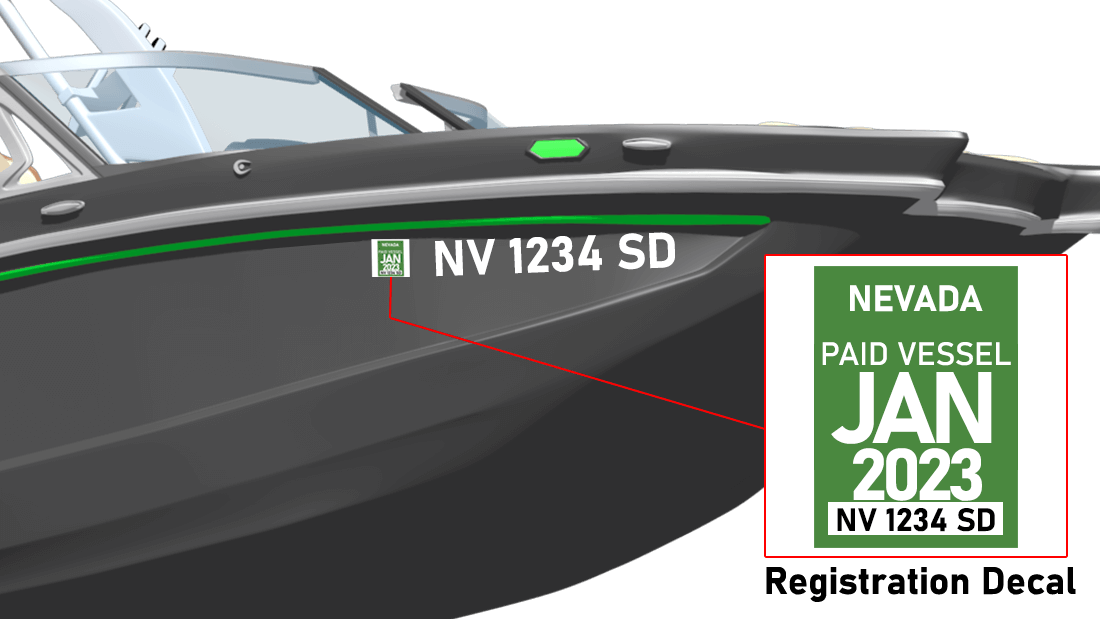
You must display your boat number in the following manner:
-
Painted on or otherwise permanently attached to each side of the bow;
-
Using BLOCK letters at least three inches high and of one solid color contrasting sharply with the color of your boat;
-
To read from left to right; letters and numbers must be separated by a hyphen or space for example, Nev-1234-AA or Nev 1234 AA
-
No other numbers may be displayed
Every vessel that requires registration must display registration decals, including personal watercraft, as proof of registration. You must display your decals as follows:
-
On both sides of the boat
-
Within three inches of the registration number
-
Only display current decals.
Larger recreational vessels may be documented with the US Coast Guard. USGC-documented vessels principally used in Nevada are exempt from the vessel numbering requirements but must display documented use decals and are subject to Nevada vessel excise tax. For more information: contact the USCG Documentation Center at 1-800-799-8362.
How do I transfer ownership of a used boat in Nevada?
-
Obtain a bill of sale: The seller and buyer should complete a bill of sale that includes the boat's make, model, year, hull identification number (HIN), and the sale price.
-
Obtain a certificate of title: If the boat is titled in Nevada, the seller must sign and date the back of the title and give it to the buyer. If the boat is not titled in Nevada, the seller should provide the buyer with a notarized bill of sale and a notarized affidavit of ownership.
-
Complete the transfer section: The buyer should complete the transfer section on the back of the title, including their name, address, and signature.
-
Obtain a notarized signature: The seller's signature on the title must be notarized.
-
Submit the necessary documents and fees: The buyer should submit the completed title, bill of sale, and any applicable fees to the Nevada Department of Wildlife.
-
Obtain new registration and decals: Once the transfer of ownership is complete, the buyer will receive new registration and decals for the boat.
Age restrictions for boaters in Nevada
It is illegal for anyone under the age of 14 to operate a vessel towing someone on water skis or similar device. However, if a person is at least 12 years old and has onboard someone who is at least 18 years of age to supervise the operator, that person may operate the boat.
PWC operators must be at least 14 years old, even if they have a boating safety education certificate, and each person onboard a PWC must wear a USCG- approved PFD.
Personal Flotation Devices (PFD) in Nevada
Vessels (both motorized and non-motorized) may only be operated in or on Nevada state waters if the vessel is carrying at least one US Coast Guard-approved wearable personal flotation device (PFD) in good condition that is readily accessible, approved for the appropriate activity, and of the correct size for every person onboard. It must also be legibly marked with the USCG-approval number.
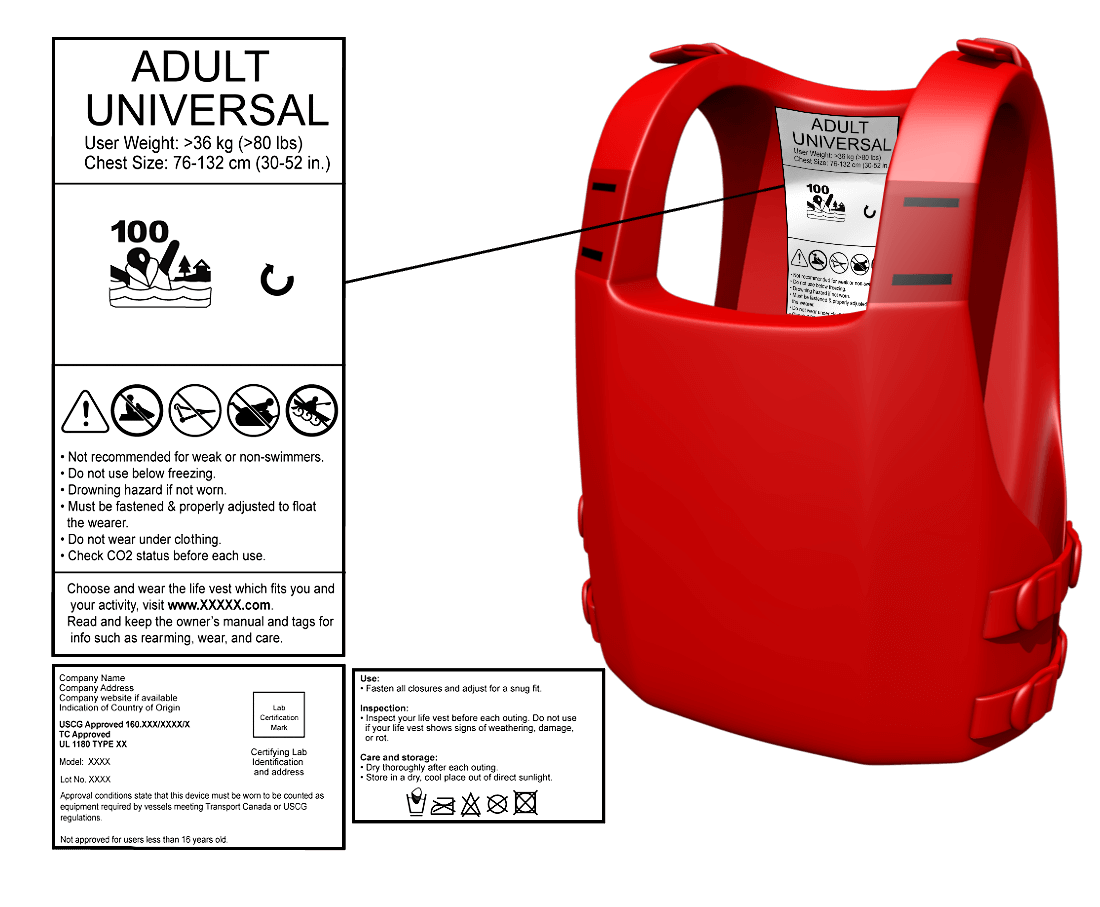
Operating under the influence of drugs and alcohol in Nevada
In Nevada, it is unlawful to operate a vessel (including PWC) or use water skis, sailboard or a similar device while under the influence (OUI) of alcohol or another impairing substance.
Alcohol and drugs cause impaired judgement, blurred vision, poor coordination and slow reaction time. Alcohol contributes to about one third of all boating accidents.
Nevada law defines operating under the influence (OUI) as operating a vessel or manipulating water skis or a similar device while having a blood alcohol level of 0.08% or greater.

Towed Water Sports in Nevada
Anyone being towed behind a boat or PWC, in an activity such as waterskiing, must wear a properly fitted Type I, II or III USCG-approved PFD.
The towing vessel must have a capacity rating at least equal to the number of people operating, observing, and being towed.
Towing people on water skis or similar devices is only permitted from sunrise to sunset.
It is illegal to operate the towing vessel in such as manner as to cause the skier to collide with any other person or object. Similarly, anyone being towed must not manipulate the device so as to endanger the life, limb or property of another person.
It is also illegal to practice teak surfing in Nevada. Aside from the obvious danger or propeller injury, the surfer is also in danger of carbon monoxide poisoning.
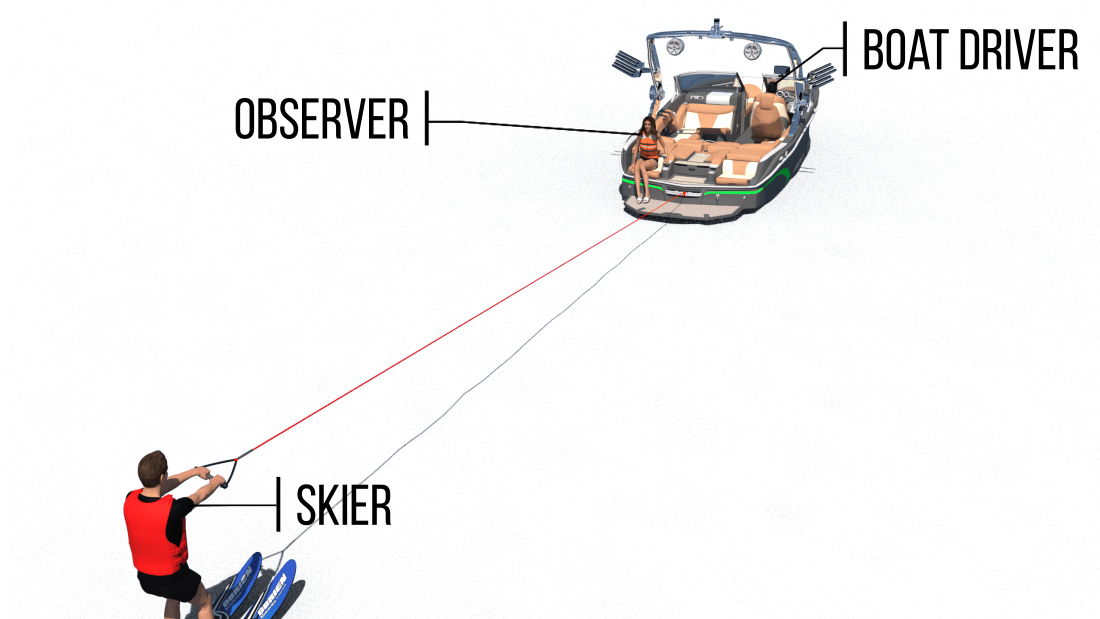
Personal Watercraft (PWC) in Nevada
In addition to the regulations and laws regarding power vessels, PWC are also subject to the following laws and regulations in the state of Nevada:
-
PWC operators must be at least 14 years old.
-
All PWC operators, passengers, and anyone being towed must wear a USCG-approved PFD at all times
-
Although it is not required by law, it is strongly recommended that the operator of a PWC attach the lanyard of the engine cut-off switch to their wrist or PFD.
-
It is illegal to operate PWC between sunset and sunrise or during periods of restricted visibility unless PWC is equipped with the required navigation lights.
-
PWC may only be used to tow a person on water skis or similar devices if it has a capacity rating for at least 3 people: the operator, observer, and the skier, and is specifically designed by the manufacturer for towing skiers.

Aquatic Nuisance Species (ANS) in Nevada
Introducing non-native species into state or federally controlled waters can upset the balance of the ecosystem and hurt the environment by clogging waterways and crowding out native species. Aquatic nuisance species such as zebra mussels most often spread between waterways by hitching a ride on vessels and trailers. When transplanted into new waters, they proliferate, displacing native species and damaging water resources.
You can help prevent the introduction and spread of non-native species from one body of water to another by checking, draining, cleaning and air-drying your boat and trailer.
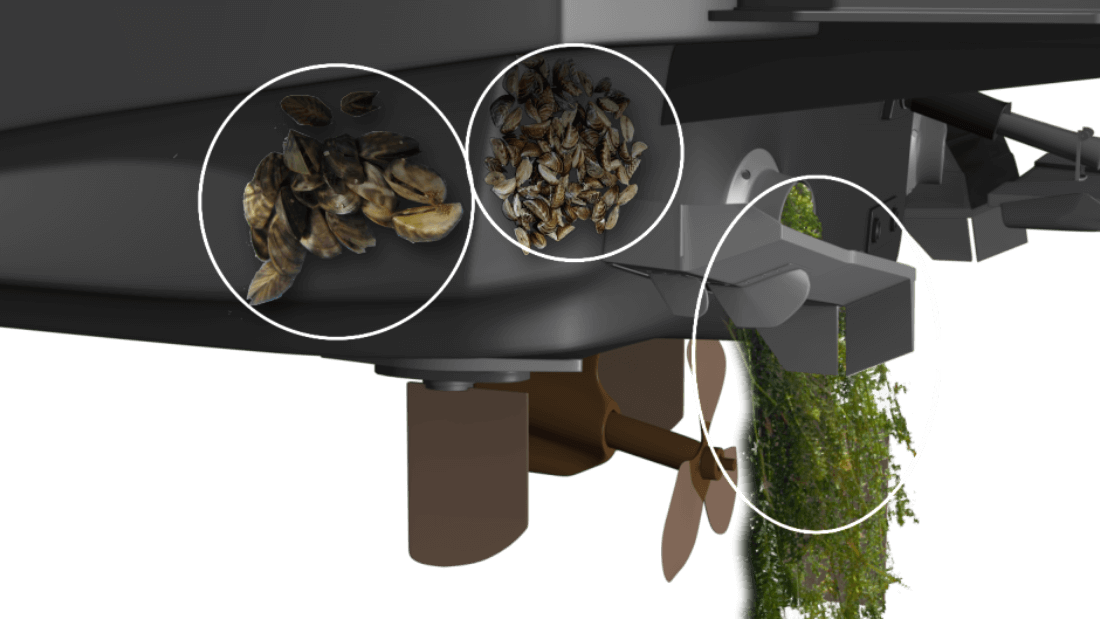
Boating Accidents in Nevada
In the case of an accident, it is the vessel operator’s duty to immediately stop their vessel and give assistance to anyone injured or in danger due to the accident, unless doing so would seriously endanger the operator’s vessel or passengers.
The vessel’s operator must supply in writing, his/her name, address, and vessel information (including the name and address of the vessel’s owner, if not the operator) to anyone injured in the accident as well as to the owner of any property damaged in the accident.
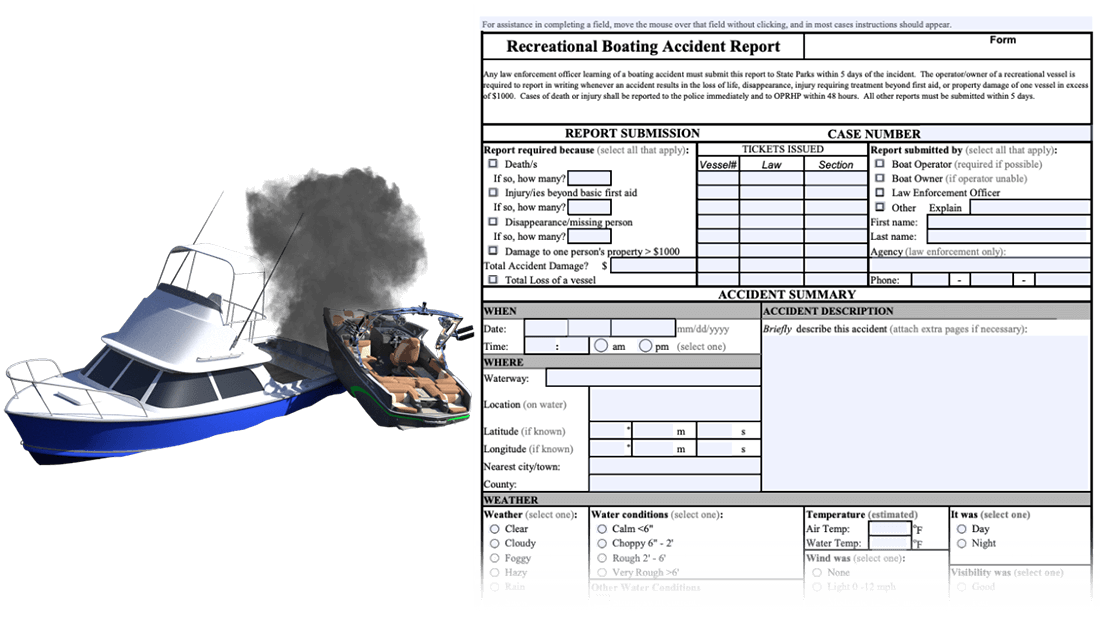
Unlawful Operation of a Vessel in Nevada
Operators must navigate in a reasonable and prudent manner at all times, this includes maintaining a proper lookout, obeying all speed limitations, and being able to stop in the assured clear distance ahead.
Operating a vessel in a manner that unnecessarily endangers another person or the property of another is considered reckless operation and is prohibited, including reckless manipulation of water skis, surfboard or similar device.
Complying with Officers in Nevada
Any person operating a vessel on the waters of the state is required to bring their vessel to a stop after having been requested or signaled to do so by an officer of the law. The operator must comply with the directives of that officer.
Should a NDOW patrol craft or other responsible authority approach, displaying a flashing blue light, the vessel operator, unless otherwise directed by the officer, must yield right-of-way, stop the vessel, and stay in that position until the patrol craft has passed.
Diving in Nevada
Persons engaging in snorkeling, skin diving or scuba diving in Nevada must display a “divers down” flag to mark their diving area. Vessels not engaged in diving operations must remain at least 100 feet from the “diver down” flag, except in the case of an emergency.
Vessels not engaged in diving operations must reduce speed to no wake speed if within a distance of 100 to 200 feet of the flag, except in the case of an emergency.

Marine Sanitation Devices (MSD) in Nevada
It is illegal to discharge any treated or untreated sewage into the waters of Nevada. For the health of Nevada waters, vessels with onboard toilets should be equipped with a holding tank, which must be discharged at pump-out stations or onshore toilets.
Vessels with onboard toilet facilities must be equipped with a working US Coast Guard-approved marine sanitation device (MSD).
Vessels up to and including 65 feet in length must be equipped with a Type I, II, or III MSD. Vessels over 65 feet must have a Type II or III MSD. Type I and II MSDs must display a certification label affixed by the manufacturer.
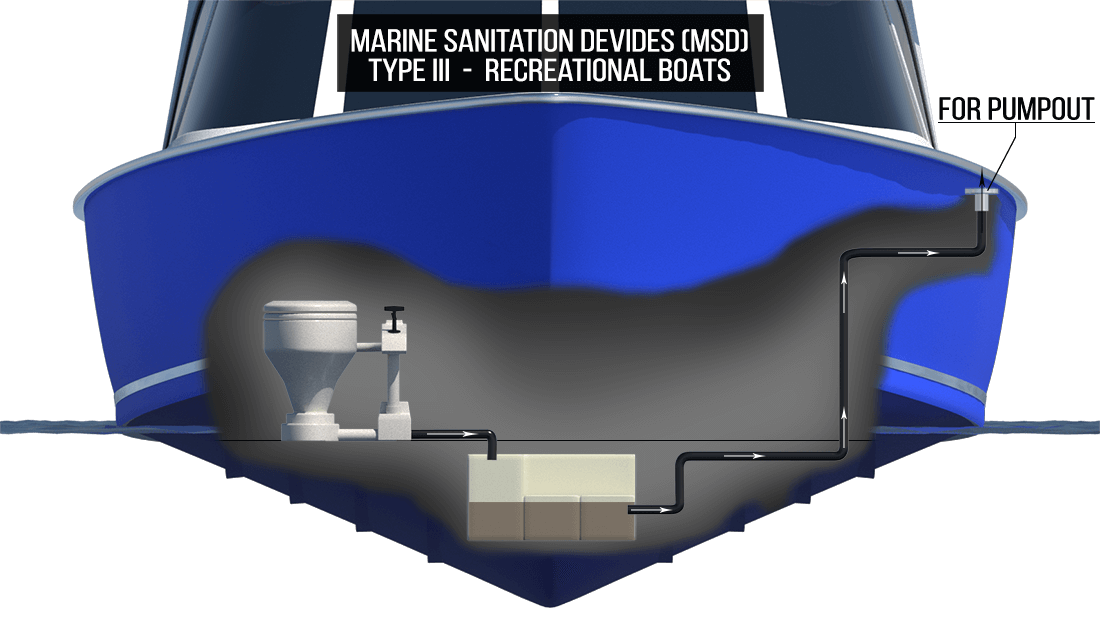
Mufflers and Noise Levels in Nevada
All vessels equipped with an engine must be effectively muffled by equipment constructed and used to muffle the noise of the exhaust in a reasonable manner. Excessive noise can prevent the operator from hearing sound signals or voices.
Other State Specific Regulations in Nevada
Fire Extinguishers:
All vessels must have onboard a Type B, USCG-approved fire extinguisher(s) if either or both conditions exist:
-
Inboard engine
-
Closed compartments where portable fuel tanks may be stored
Visual Distress Signals:
Visual distress signals (VDS’s) allow a vessel operator to signal for help in the event of an emergency. All VDS’s must be in serviceable condition, readily accessible and certified as complying with USCG requirements.